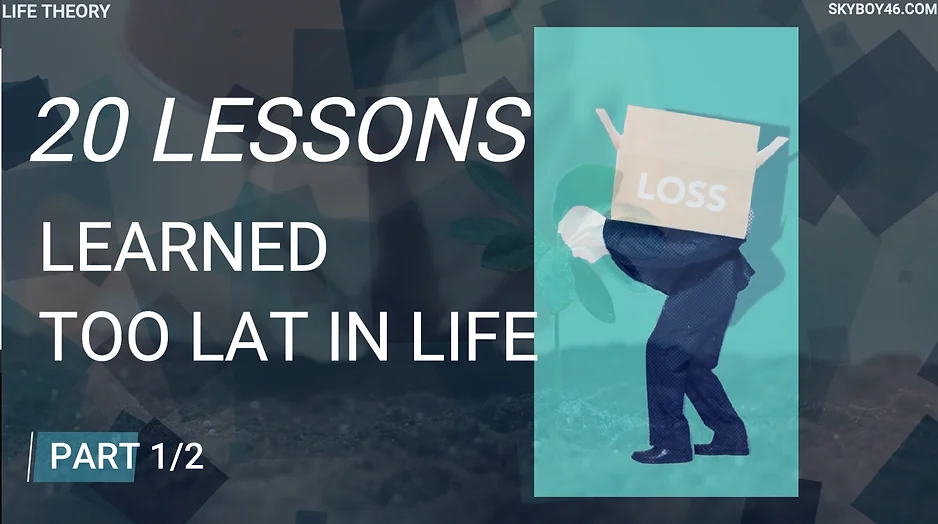What if the words we speak hold secrets to ancient history? Dive into the linguistic detective work that traced the origins of the Slavic people through the names of trees and rivers. Discover how language, often overlooked, can reveal the hidden stories of migration, culture, and survival. Are you ready to hear the whispers of the past in the words we use today?
SUBSCRIBE: https://www.youtube.com/@LifeTheory46
VISIT: https://linktr.ee/lifetheory46
Get You Monthly Life Stories in Advance & Our Premium Learning Packs HERE:
Unraveling the Hidden History in Words
For centuries, language has been a silent witness to history, carrying the marks of ancient cultures, migrations, and mysteries within its very fabric. Today, we dive into one such mystery that baffled historians and scholars alike: the origins of the Slavic people. This is a story not merely about a group of people, but about how language itself can hold the keys to understanding the past in ways that archaeology or written records sometimes cannot.
The Slavs are a vast ethnic group scattered across Eastern Europe, with over 350 million people speaking 13 different Slavic languages today. Yet, their history wasn’t always so clear-cut. In the early medieval period, the Slavs seemed to suddenly appear on the scene, rapidly expanding across Europe, absorbing or displacing other tribes. For a long time, no one could quite pinpoint where they came from, or how they became such a prominent force in shaping the region. Theories floated around, but definitive answers remained elusive.
Scholars initially speculated that the Slavic people might have originated near the Mediterranean or the Near East, having been pushed westward by nomadic groups like the Scythians. But mere theories weren’t enough. There had to be a clearer answer—a clue hidden in plain sight, waiting to be discovered.
Enter Józef Rostafiński, a Polish botanist with a passion for language and folklore—a curious mix of interests that led him down an unconventional path. In 1908, he published his work On the Homeland and Economic Life of the Slavs in Prehistory, where he proposed something revolutionary: using language and the natural world to trace the ancient origins of a people. He took a closer look at the modern Slavic languages—Polish, Czech, Serbian, and others—focusing on the words for trees and geographical features.
What he found was fascinating. Many words for trees, such as pine, oak, and beech, weren’t originally Slavic but borrowed from neighboring Germanic tongues. This suggested that the Slavic language had developed in an area lacking those specific trees—somewhere their native environment didn’t expose them to the broader diversity of European forests. Furthermore, while the Slavic languages had rich terminology for rivers, streams, and lakes, they lacked words for beaches or shorelines. This indicated a landlocked region, far from the influence of coastal life.
Piecing these clues together, Rostafiński pointed to the Pripyat River Valley, a vast, swampy region straddling Ukraine and Belarus. The marshlands there, devoid of certain types of trees and far from any coastline, fit the bill perfectly. The language told a story—one of a people who had developed in a secluded, specific environment before embarking on their migration across Europe, absorbing cultures, conquering territories, and spreading outwards.
What makes this discovery so captivating is the very nature of language itself. It evolves with us, not always consciously, but inevitably. As people migrate, interact, and adapt, their words reflect these experiences. While kings and aristocrats have historically dictated written records, shaping the story to fit their needs, language remains an unintentional chronicle—a record of lived experience, free from deliberate manipulation.
When ancient peoples moved, they encountered landscapes and concepts for which they had no words. They borrowed from others, modified existing terms, or created new expressions on the spot. Language is dynamic, constantly absorbing the influences of those it encounters along the journey. It doesn’t just evolve because we will it to; it changes as we are changed, reflecting new realities, new ways of thinking, and new ways of being.
Even today, language continues to morph with cultural shifts. Think about the words we use now that didn’t exist—or meant something entirely different—just a few decades ago. The rise of technology brought terms like “selfie,” “hashtag,” and “streaming” into everyday use. Social changes, such as women’s increasing participation in the workforce and the mainstreaming of Black culture, have also left their mark on our vocabulary. Words like “woke,” “bougie,” “savage,” and “spill the tea” are now part of the cultural lexicon, signaling shifts in societal values and identities. The way we speak is a living reflection of the world we inhabit, with language serving as both a mirror and a map of where we’ve been and where we’re headed.
In unraveling the origins of the Slavs, we’re reminded of how deeply language connects us to our past. It carries traces of the landscapes our ancestors walked, the foods they ate, the gods they worshipped, and the struggles they endured. And through it all, it retains a certain truth—one that can’t be rewritten or erased, only uncovered. The more we listen to language, the more we realize it’s not just a tool for communication, but a window into the soul of humanity, stretching across centuries and continents, telling stories that have never been written but have always been spoken.
–> Read More Life Stories Here:
https://www.lifetheory.us
https://www.lifetheory.eu
Buy all of our Life Stories & Our Premium Learning Packs. Listen or Read to them anytime you want. Have them Forever.
You can get each monthly lesson on our website at https://www.skyboy46.com/store
SHARE THIS STORY
Visit Our Store
SHOP NOW
www.skyboy46.com & www.myskypet.com
Designed For Pet Lovers & Introverted Souls
Sport, Hobbies, Motivation, Music & Art






~EXPLORE MORE~
www.linktr.ee/skyboy46


